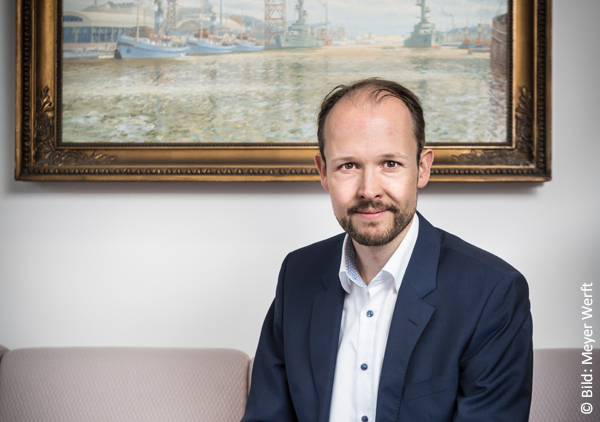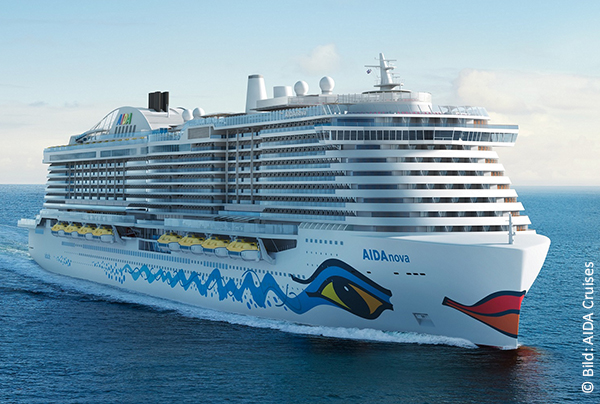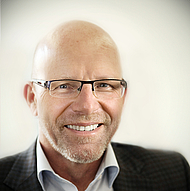
|
|
The Meyer Group, one of the world's leading builders of cruise ships, has adopted the platform concept to develop and build ships whose appearances differ, but which share a common technical basis. PROSTEP's native CAD conversion was a decisive factor in the reuse of design data from the Meyer shipyard in Papenburg at Meyer's Turku shipyard in Finland. Managing Director Dr. Jan Meyer explains the challenges that accompany this innovative approach to shipbuilding. 
Question: What are the main challenges the Meyer Group faces in the global cruise ship market? Meyer: There are many challenges. The very specific requirements of our cruise-ship customers, with their wide range of offerings for different types of passengers, mean that our products are highly customized. The ships have to offer an exciting experience and a spectacular ambience, but at the same time they have to use space sparingly. They have to be built cost-effectively, look good, be safe and be equipped with the latest technology such as fiber optics and wifi. And they have to meet the increasingly demanding energy efficiency requirements. All this leads to a high degree of cost-consciousness during design, which requires close collaboration with our core customers. Question: Isn't it true that time pressure is a major challenge in shipbuilding? Meyer: Every project is subject to time pressure. We rarely have more than three years to build the first ship of a new class, from signing the contract to delivery. This means that we start building certain segments before design of the entire ship is complete. There is a considerable amount of overlap between design and construction. Otherwise, it would simply not be possible to deliver the ships on time. After all, you have to remember that a cruise ship like this is as big as 1,000 family houses put together. Question: What is special about your cruise ships? Meyer: We most certainly offer the greatest added value, the best design and top quality; we build the ship cost-effectively and we can be trusted to deliver it at the agreed time. All this relies on a correct database of design data, and this requires multi-disciplinary CAD collaboration. Question: What drove the decision to develop a common platform for multiple ships? Meyer: Carnival Corp., one of our major customers, needed several ships for its different brands, which are aimed at different target groups and markets. They were looking for economies of scale and synergy effects, not only during the design phase, but also in subsequent operation of the ships. That's why they came up with the idea of building very different looking ships that share a common technical basis. The passengers will experience the ships as being unique, because sun decks, public areas and so on look entirely different, even though the substructure is the same. The particular challenge was that the first ship for AIDA Cruises was to be built in Papenburg, while the COSTA ships are being built in Turku. The agreed delivery schedule meant that we had to start designing the COSTA line before design for the AIDA was completed. Since the public areas of the two ships are very different, we also had to be able to make considerable changes to the original design data using different CAD tools. That's why we asked PROSTEP for help with data conversion. Question: What benefits does the platform concept deliver for the Meyer Group? Meyer: Without going into the details, we also benefit from economies of scale in engineering, purchasing and production. In this sense, it is a win-win scenario for both the customer and the Meyer Group. Question: How did the platform concept affect your PLM strategy? Meyer: The delivery date for the ships was not negotiable, so we were under considerable time pressure and first had to solve the conversion problem. This was a serious challenge due to the size of our products and the large number of disciplines involved in the design process. We investigated two alternatives: One was to use a native converter to directly export CATIAV4 data from Papenburg to the CAD systems AVEVA and Cadmatic, as used in Turku; the second was to use a neutral converter. To my surprise, the neutral converter was not able to transfer all the required information, whereas the native converter developed by PROSTEP worked very well. I would have thought that conversion of the native format would be far more complicated than it turned out to be. Question: How will the PROSTEP converter support your future PLM environment? Meyer: On the one hand, comparing the different CAD systems used at the two shipyards in preparation for the conversion process helped us to define our joint CAD and PLM strategy. On the other hand, the PROSTEP converter, which is actually two truly native converters, will continue to play an important role in the future. We need to be multi-CAD capable to migrate to a more modern and homogeneous CAP/PLM environment. Multi-CAD capability is of strategic importance for our future CAD/PLM architecture, because we also need to integrate our team of suppliers, each with their different CAD environments. And, of course, there are our customers who require us to support their particular CAD systems. Question: From your perspective as a shipbuilder, do you think there are additional, specific requirements that need to be taken into account by manufacturers of commercial CAD and PLM systems? Meyer: We need a multi-disciplinary environment for the many different people involved, and this environment must support both technical and business collaboration. This makes openness one of our fundamental requirements. Question: Do you need more extensive functionality for cross-company collaboration in your PLM environment? Meyer: Absolutely. It will become increasingly important in the future because we are working in a real ecosystem. Our share of value added lies between 15 and 25%, the remaining share is accounted for by suppliers of turnkey packages and services that we purchase. This requires very close collaboration, and we will certainly not be able to persuade everyone involved to use the same systems. It is very interesting for us to see how the construction industry has taken a somewhat different path, where BIM technology serves as the common exchange standard. But companies in that industry have different requirements because their partners are constantly changing. In contrast, we have a relatively stable supplier network in shipbuilding. This allows us to invest more in collaboration technology. Question: What progress have you made with digitalization in respect of the way you work together with suppliers, classification societies, and so on? Meyer: Currently, we interact digitally with most of our collaboration partners on the supplier and customer sides, even if the extent of such interaction can certainly be increased – at least where it makes sense. I'm not over-fond of the discussion about paperless processes, because we need the right tools and media for each job. Digitalization for its own sake misses the point. Paper remains an alternative because it has a number of advantages in terms of durability, usability and resolution. Nevertheless, we will increasingly be cutting back on paper and switching over to digital masters. We already use digital masters in our two shipyards, but they do not yet contain all the information from our subcontractors. 
Question: Do you see PROSTEP as part of the ecosystem, as a long-term partner for digitization? Meyer: We are currently engaged in fruitful discussion with PROSTEP as to how we can again use some of the technologies that the company has developed and how we can take advantage of our longstanding partnership and common understanding to realize our multi-CAD vision. It will depend on the outcome of the negotiations, but we hope that PROSTEP will continue to be our partner in the future. Profile of the Interviewee Dr. Jan Meyer (1977) is one of the four member of the Meyer Werft board of directors and since 2014 Chief Executive Officer of Meyer Turku shipyard. Being the eldest son of managing director Bernard Meyer, he represents the seventh generation of the well-known German cruise ship builders. Jan Meyer started working for of the family-owned business back in 2008 and assumed responsibility for the whole cruise ship design process as Technical Director. As a ship builder by passion, he holds a PhD of the Jacobs-University of Bremen, having gained professional experience at ship yards in Korea and Denmark before. He also completed a master’s program in Naval Architecture at the Massachusetts Institute of Technology (MIT) in Cambridge/Boston, USA. |
|
| © PROSTEP AG | ALL RIGHTS RESERVED | IMPRESSUM | DATENSCHUTZERKLÄRUNG | HIER KÖNNEN SIE DEN NEWSLETTER ABBESTELLEN. |

